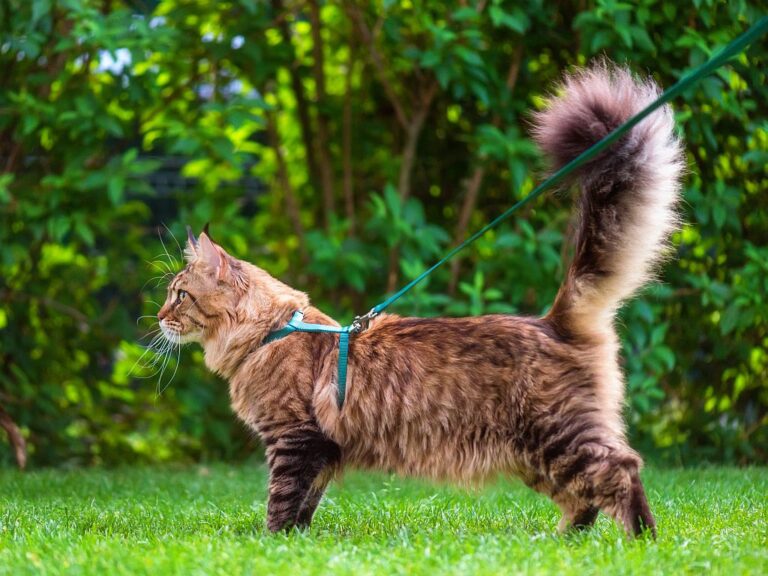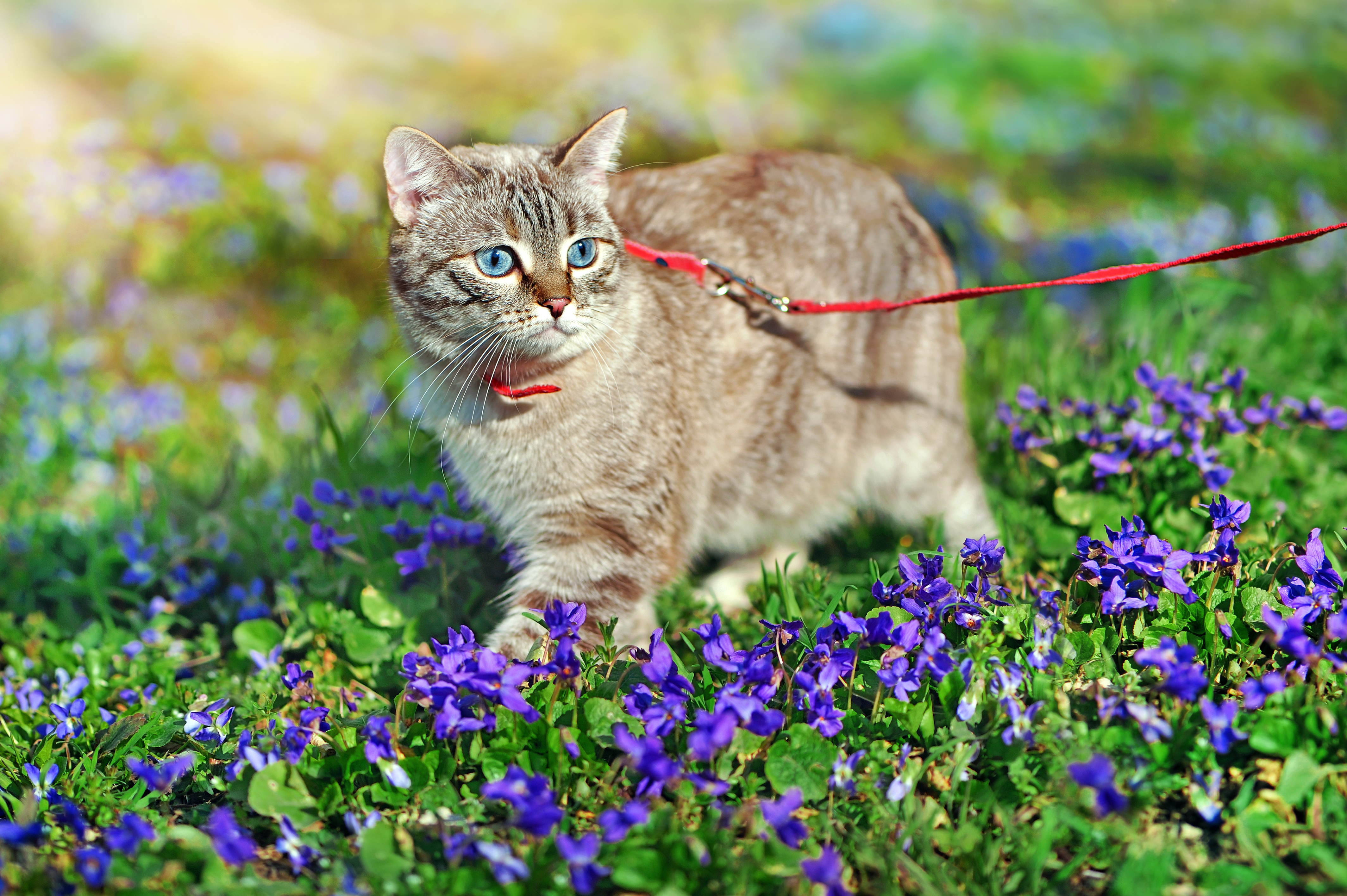Getting Cats Used to a Lead
A cat on a lead – can that work? Of course! With the right training, felines enjoy walking on a lead, although not all are suitable for a regular catwalk. Read here how you can get your cat used to a lead.
A cat on a lead – can that work? Of course! With the right training, felines enjoy walking on a lead, although not all are suitable for a regular catwalk. Read here how you can get your cat used to a lead.

© DenisNata / stock.adobe.com
Cats love extensively exploring their territory. This isn’t possible for all cats though, because some aren’t used to outdoor access. Others live near a main road or in a third-floor apartment, which can lead to outdoor access not being an option. A lead can help in such cases. This allows former indoor cats or kittens to get used to being outdoors and to take their first steps in their new turf together with their owner. You prevent fearful cats from running off in panic at the smallest noise due to several new stimuli. If no long-term outdoor access is planned, a lead can offer your cat fresh air and variety. However, be aware beforehand that once your cat is used to it, it will demand regular outings. Only make a start with it if you have the time and inclination to get outdoors with your cat on a daily basis.
Fundamentally, it makes sense to teach all young cats to walk on a lead, because situations in which a lead proves useful can always occur. This includes moving home, for instance, when you can explore the new environment together with your cat with the safety net of its lead. Or long car journeys when you wish to take your dog out of its carry case on the lead during breaks. However, not all felines benefit from walking on a lead on a day-to-day basis. If your cat suffers from anxiety, approaching humans, fellow cats or even dogs will only cause it unnecessary stress. It’s very difficult for senior cats that have solely been kept indoors to get used to a lead and the many stimuli outdoors. If you have a quiet front garden, you could make an attempt there even with an anxious or elderly cat. Alternatively, you can look into cat-proof fencing.
Cats should always walk on a lead with a harness, never just a collar. A collar can easily slip over the head and isn’t secure enough. Cats can also injure themselves if they suddenly get caught on their collar. Make sure you choose the right size when buying a harness. Most harnesses for cats fit all felines, whilst you can opt for dog harnesses with larger cats. The choice of lead is based on what plans you have for your cat. If you just want to enjoy the garden together, a ten metre-long tracking lead is recommended. It it thicker than a flexi lead therefore easier to pull out of bushes. If you would like to explore outside of your property with your cat, you should use a lightweight lead for small dogs. Flexi leads are a possibility. Get familiar with using them beforehand to be sure that you are able to shorter the lead in dangerous situations.
The first step to taking your cat for walks is getting used to the harness. Put the harness on your cat inside your home. Some are quite relaxed, whilst others are irritated by the unusual garment. Associate wearing the harness with something positive: give your cat treats or distract it with a game. Once your cat is relaxed moving with its harness, you can attempt the next step of associating the harness with the lead. This will still take place within your home, where your cat will learn in a safe environment that it can be stopped by the harness. Don’t make any sudden movements and praise your cat when it stays relaxed despite the lead. You can give your cat positive reinforcement if your practise clicker training with it.
 © iagodina / stock.adobe.com
© iagodina / stock.adobe.com
The first trip outdoors is very intriguing for your cat. Radiate tranquility and be a calming influence for your companion. On the subject of calm, not all places are suitable for walks. A tranquil inner courtyard or garden are ideal at the start, then you can progress to the 30km/h zone. Choose the least busy time possible and take your cat out. Set it down in a suitable place. A protected spot on a house wall from which your cat can explore the area is ideal. If you tackle this straight away, great! If your cat doesn’t move from its spot, sit next to it and wait. Treats or a feathered fishing rod can also lure your cat. However, it’s totally OK just to sit there during the first foray.
Only very few cats walk alongside you on a lead like dogs do, so you’re better off not expecting this. In most cases, your cat takes the lead and you follow. Your objective is primarily to protect your cat from sources of danger. It’s possible that your cat may make itself comfortable under a tree and observe its surroundings. Don’t urge it to leave this spot. The cat sets the pace of its tour of discovery. Unlike dogs, cats can climb, which can be dangerous if they sit on a branch and the lead gets stuck. Avoid attempts at climbing and beware of thick undergrowth too. Some cat experts recommend taking a carry case with you. This means that the cat’s retreat is only a stone’s throw away. Anyone who has ever had to pick up a frightened cat knows why this can be worth its weight in gold.
Discover our selection of cat leads and cat harnesses!
A cat on a lead – can that work? Of course! With the right training, felines enjoy walking on a lead, although not all are suitable for a regular catwalk. Read here how you can get your cat used to a lead.
Trust is needed for a harmonious relationship with your cat. But can you build your cat's trust and how do felines show that they do trust you? Cats are considered independent and not very transparent, but these five signs of behaviour will prove to you whether and to what extent your cat trusts you.
Cat sounds are varied and act as a tool to express feelings. The most well-known are miaowing, purring and hissing. This article translates the most important sounds into human speak.